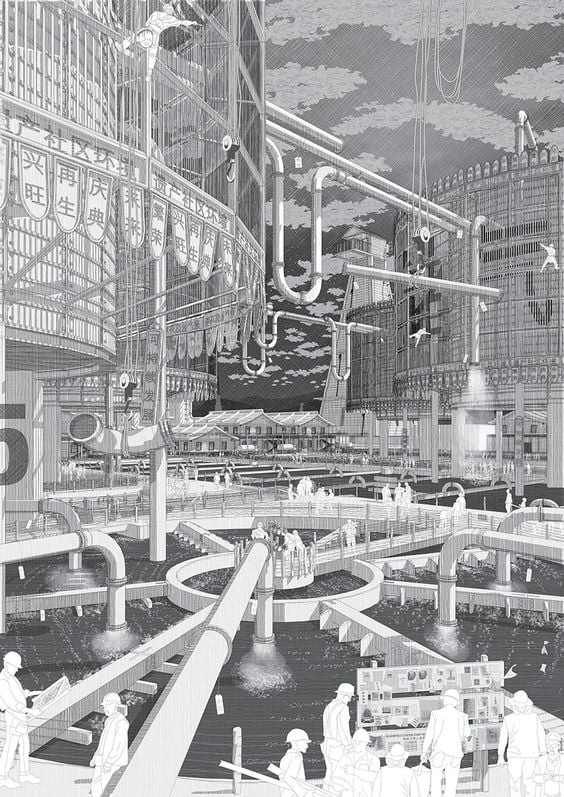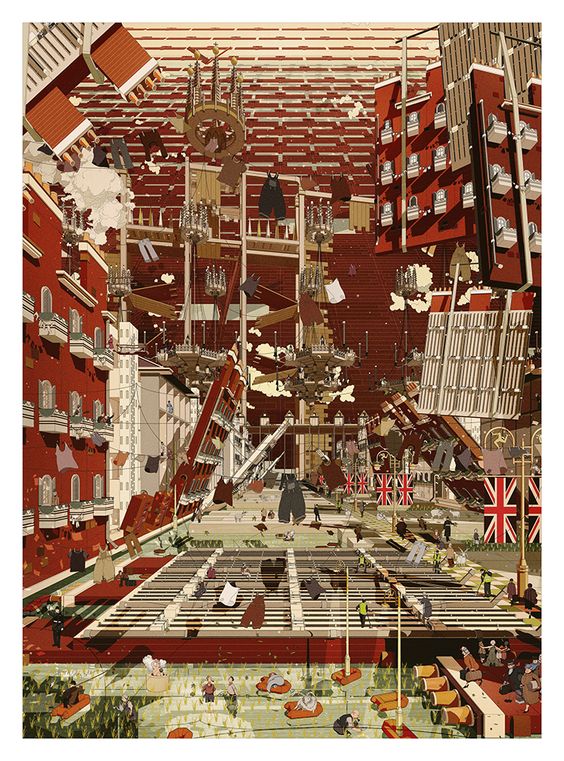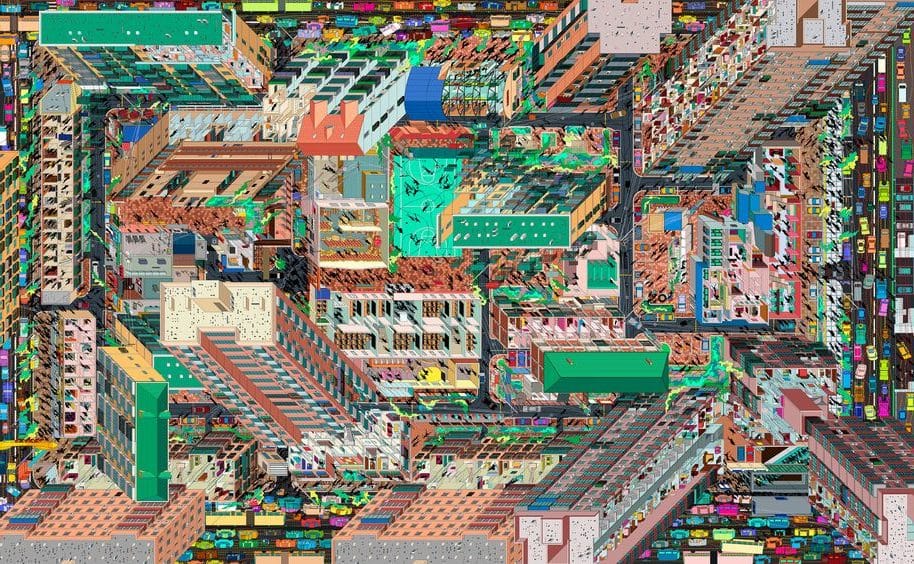With a degree in architecture, you can explore 21 diverse career paths, ranging from design-centric roles like Architect and Interior Designer to specialized positions like Sustainability Consultant and Urban Planner. These careers, spanning management, design, development, and research, underscore the multifaceted and comprehensive scope inherent in the field of architecture.

However, a lot of Architecture grads often find themselves clueless as to what career to pursue once they hit the job market. Like many other courses, they don’t really know how to go about it, or if they even want to pursue a job as an architect in the mainstream at all.
In case you’re wondering the same, worry not. I am here with a list of twenty-one career opportunities that you can pursue with an architecture degree in hand. This way, you can probably narrow down your list of options and go with the one that your heart leans forward to the most.
Generally, careers in architecture can be segregated into various broader industries – like mainstream architectural jobs, art and design roles, and careers outside designing.

via ucl.ac.uk
Careers You Can Pursue With a Degree in Architecture
Architecture is basically said to be the art, or otherwise, the practice of designing and constructing buildings. However, many professionals in the field often debate over the clear-cut definition of the discipline. Furthermore, it is really difficult for them to break away from the usage of broader terms, given its nature of far-reaching horizons. And that’s definitely one of the reasons why it could be terrifying to decide which kind of architect you want to be.
These are the seven major branches of architecture you might want to consider if you’re looking to make a career in the mainstream industry.
Landscape Architect
Outdoor landscape designing is quite crucial in creating webs that establish a connection between the urban and rural spaces in a given region. This includes the designing of infrastructure, agriculture, forestry, and even public areas. However, what is even more important in this age is to keep in mind the factors like climate change and globalization, and respond to them accordingly.
So many landscape architects these days are working on several aspects of environmental restoration, water management, and the creation of recreational spaces among several other things. In case you are a lover of conservation and work towards the betterment of the natural environment while doing your job, this might be the right option for you.

Urban Planner
Now, this is the one for those who would like to gain recognition with incredibly functional and creative designs related to the development of urban areas. Since urbanization is at its peak these days, with more and more people moving to the cities to make a livelihood, there has been a growing need for the construction of urban spaces; and not to forget the constant change in the conditions of urbanism.
The fluidity of these conditions has definitely attracted many architects to go down this career path, as it is quite challenging to cater to the evolving needs of the urban environment while responding to the demographic and economic changes and ultimately providing a sustainable space to live in. This is a challenging responsibility for one but can be quite gratifying if you are willing to take up the challenge and adapt to the dynamism of the work nature continuously.
Research Architect
Digital designing is taking the architectural industry by storm these days. With the broad impact of Information technology on the world of architecture, the tools of digital design, and the methods of expression and representation of the art are advancing dramatically.
Though IT receives the credit for this radical change, it is because of the research by the curious architects that this has been possible. These research architects work on a myriad of things, ranging from building design enhancements to the development of state-of-the-art tools that can make miracles happen.

Restoration Architect
No brownie points to guess what a restoration architect does, as the name itself gives away the job profile. If it were to me, I’d say this could be one of the most exciting roles for those who are interested in the societies’ history and heritage and would love to be a part of making these sites of historical significance available for generations to come.
There’s no denying that the incredible architecture from the masterminds of the past has given us an exponential insight into the bygone world. So, one could say that the conservation and restoration of places like these can be quite a challenge. Besides, you must deal with all those people who would be protesting against the art of renovation and restoration of heritage monuments, often labeling them as a heritage massacre.
Political Architect
This might be a relatively new term for a lot of architects out there, but it has been around for a while. There have been arguments that political architecture mostly revolves around the aspects of politics, but it is a different thing to be actively involved in the decisions related to politics.
Many will agree to the fact that architecture is not just about creating objects that are visually aesthetic but is also about taking up a crucial role in organizing the society itself. Let’s take Terroir, an Australian architectural firm for example. Over the years, they have worked with political bodies in Australia, like the Burnie City Council and Parramatta City Council in devising arguments to create a specific structure for the city, predict future events based on the information collected, and come up with a set of criteria targeting the city’s evolution. This is one of those rare aspects of role reversal where politics is influenced by architecture.
Lighting Architect
The world cannot run without light – be it natural or artificial, and you cannot argue otherwise. It also has a definite impact on both our physical and mental health. Lighting Architecture deals with improving the sustainability of not just natural spaces, but also living and working environments.
It is one such underappreciated branch where you could actually tap into the lives of people and enhance their health, well-being, and overall life experiences for good.

Courtesy of Jason Lamb
Extreme Architect
Owing to the increasing natural hazards, climate change, and global warming, a new branch of architecture came to light. It is a known fact that the natural landscapes might cease to exist as we know it, due to the weather changes, and increased prediction disasters like earthquakes, famines, and hurricanes lead to extreme phenomena such as desertification, flooding, and eventual destruction of the surface of the earth.
Extreme architecture deals with the tackling of these severe issues by providing solutions that help us sustain and adapt ourselves to the future of the world.
Careers in Art and Design for Architects
These might not be the first of the career paths to cross your mind when one talks about architecture. But if you realize that you don’t want to be an architect through the course of your study, then you can look into pursuing Art and Design.
Architecture and design go hand in hand. If the former is the subset of the latter, or if it is the other way around, we don’t exactly know. But what I can tell you is that you can happily make a career in Art and Design with whatever knowledge you have accumulated as a student of architecture. What’s even better? You can fuse both disciplines to create something even better and express your creativity to the world.

Artist
The relationship between art and space is quite crucial; it is exemplified by many artists who have worked with architects, even without a degree in architecture. But, what helps architecture student excel in this field is their skills in spatial reasoning and visualization, which can enable them to install art, sculpture, and spatial experiences efficiently, without any need for functionality.
Industrial Designer
Industrial designing is one of the newer verticals that many architecture firms have been branching out into lately. This is because of the similar creative connections they share. Although industrial designing majorly emphasizes on mass production of smaller-scale objects, rather than designing huge buildings as such, this can serve as an excellent alternative for those who want to venture into something smaller than the mainstream architect role which can be quite challenging at times.
Textile Designer
Designing textiles is something one might not expect an architecture grad to pursue, but the knack for observing the color sensitivity, construction of textiles, patterns, and forms, and tactility, which are developed through the course of study, can be handy when designing textiles.
As opposed to some people’s arguments the relation between skin and structure can be literal in more ways than you presume it to be in the construction of a building as here, the two of them merge into one. So, you can say that the industry of High Fashion is much like architecture in several aspects, and it is something you could definitely give a try.

Furniture Designer
Furniture designing is closer to architecture than you think, even more than something like industrial designing. In many ways, you could think of this field as the little sister of architecture.
There have been many famous architects like Charles and Ray Eames, Alvar Aalto, and Arne Jacobsen who have given a lot to furniture designing, and it has been a trend among many contemporary architects to work for the furniture industry.
Graphic Designer
This is one field that has been taking the world by storm these days. It is where a lot of us identify our take on the various things around us and express the same to the masses. The visual aestheticism that comes with the work appeals to a significant chunk of the youth and encourages them to take up this creative job.
An architecture degree, complemented by a short graphic designing course will open the doors to a multitude of possibilities to communicate with people, while still closely working within the field. As one can imagine, the best architecture websites have been envisioned and designed by architects for architects!
Production Designer
Even though it doesn’t exactly give you the experience of designing a landscape or a high-rise, working on creating a film set or a stage for a play can give you the satisfaction of being an architect, albeit in a much smaller scale. Besides, it allows you to be more creative compared to the former.
Also, it takes you away from all the pressurizing demands of achieving that perfect spatial design and expression, that mainstream architecture needs. Instead, you get to work on something that focuses on creating experiences and driving the story forward. What you can add to production designing as an architect one may ask, but all that education definitely gives you an upper hand with all the experience in handling time pressures and collaborative creativity and working on conceptual environments.
Video Game Designer
I would say that a video game wouldn’t merely be that great without all those realistically designed virtual spaces. This is one field where you can use all your architectural knowledge and create virtual environments, but only with your imagination running wild and working in a setting where there are no boundaries to stop you from your vision. Besides, designing all this is so much more fun than designing buildings in reality.
Photographer
Photography is considered an art, where you capture beautiful images with just a click of your camera. However, an image that is obtained can only be compelling when it is aesthetically framed. This depends on several factors, like the exact moment of its composition, the angles involved, and the framing of the subject.
Even though it’s not nearly close to a permanent organization of spaces as an architect would do, photography widely concerns itself with composition, color, environment, and experiences of the people or places that are captured. Owing to its nature, and beautiful geometry and spatial beauty involved, architectural photography has been gaining popularity in recent times.
Careers for Architects Outside of Design
If all that you’ve been through during your architecture school years has made you aversive to the field in general and made you want to do something that isn’t directly related to architecture, allied art, and design, then you could perhaps consider one of these career options.
These industries are nowhere related to the industry directly, but they help you pursue human sciences such as architecture and enable you to connect directly with the experiences of human beings.
Also, what better way to learn than taking in your knowledge from all those lectures and incorporating them into a new discipline altogether?
Writer
As a writer with an architecture background, you will be able to deliver your message with efficient use of language and articulation. You can be descriptive, rhetorical, and persuasive depending on the need of the hour and could easily express the most complex of projects in a very effective way.
Imbibing this skill into writing – be it fictional, non-fictional, scientific, academic, or even journalistic styles will open a portal to a world of new experiences for you, as well as others.
The easiest starting point is the academic ghost market, as writing essays and papers will be a no-brainer for you. Furthermore, if you want to have a little connection to your studies as well as a passion for writing, you can write for architecture magazines like me, and give input, talk about experiences, or give the readers wonderful insights into the world of architecture.
Teacher/Professor
These days, a lot of graduates turn to teaching soon after they attain a degree; architecture schools are no exception to it. Whether it is a sheer passion to pass on the knowledge you’ve accumulated, or just a simple need for more time until you decide what you really want, teaching can be an ideal job for youngsters to take up.
This not only allows you to have some time for yourself but also helps you learn a lot more, as well as gain new perspectives on architecture from the insights received from your students since teaching is essentially a two-way process.
Politician
As I mentioned before, pairing architecture and politics can be an odd, but fruitful combination. Knowing the thought process of the masses, and how they look at and interact with the environmental spaces, the way they organize themselves, and work towards feeling comfortable – both body and psyche-wise can help you become a great politician.
Anders Adlercreutz, a member of the Finnish parliament, can, in fact, be taken as an example of the same. Before he turned to politics, he has been an architect for several years. The same is the case with Richard Rogers, who, along with practicing architecture, serves in the House of Lords in Great Britain.
- Philanthropist
Architecture was once considered a profession of the gentlemen and had a humanitarian element to it. With time, the job has been taken up by many a man, but there are still a lot of people who practice it with the ideals of philanthropy attached to it. However, it is seen in the form of a passion for creating sustainable modern architecture that helps the environment as well as the social, psychological, and economic needs of the societies.
In case you want to do something more beyond creating sustainable spaces, you can branch out your philanthropic ideals into something more, probably even start an awareness foundation with humanitarian aims.
- Conservationist
Many of the contemporary architecture firms practically scream of working towards a better future for the world by making the practice a lot more sustainable. No matter how much we do, it seems like it’s not enough to be able to save the earth in time.
An architect’s knowledge of spatial organization can be used to research and develop new conservation methods that can help save our society in a more efficient manner.
- Entrepreneur
These days, a lot of grads who are fresh out of college are looking forward to founding their own startups and becoming entrepreneurs. What keeps an architect in the game with entrepreneurship is their ability to solve problems, think creatively, and persuade others. This can be the required fuel for your fire of being an entrepreneur, and combined with your abstract ideas and human interaction skills; you can barge into the industry with confidence.

Credit | Jason Lamb | University The Bartlett School of Architecture, UCL | London, UK | Degree MArch | Advisor CJ Lim and Bernd Felsinger | Project Title FRACKPOOL The Legacy of Hydraulic Fracturing in Blackpool
Conclusion
With this, the list has come to an end, but these are just a few career choices that you can shortlist and choose from, according to your interests. You can, of course, combine one or more of these, and explore possibilities of trying something different and standing out. Just remember, there’s an ocean of choices out there, and don’t blindly follow just a path when you are capable of carving one on your own.
Related Articles
Learn How To Become An Architect
8 of the Best Desk for Artists Today
47 of the Best Gifts for Architects
33 Best Gifts for Interior Designers and Creatives Everywhere
Photo Courtesy via Pinterest




